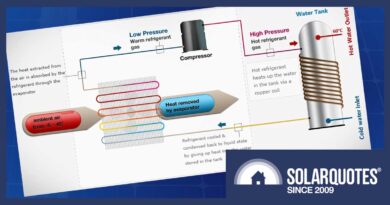Call For Net Zero Emissions In Australian Healthcare

The Australian Medical Association (AMA) and Doctors for the Environment Australia (DEA) want to see Australia’s healthcare sector slash its carbon emissions 80 per cent by 2030 and achieve net zero by 2040.
The sector’s carbon emissions were estimated to be around 7% of Australia’s total CO2 emissions in 2014-15. Of the ~35,772,000 tonnes attributed to the sector, 44% were associated with public and private hospitals, 19% with pharmaceuticals, capital expenditure comprised 8%, community and public health 6% and general practice 4%.
There have been various piecemeal efforts to reduce emissions, including a solar power rollout in Victoria at 74 healthcare and related facilities. In New South Wales, Hunter New England Health is striving to reach carbon neutrality by 2030, with solar energy to play an important role.
In August last year, the AMA’s Queensland branch and DEA said solar power and battery systems should be installed at all 122 public hospitals in Queensland. Then in October, the Queensland Government committed to extending solar energy trials to 50 public hospital sites across the state.
But solar is only part of the solution and there is no coordinated approach to emissions reduction in Australia’s healthcare sector across jurisdictions.
Given the current situation, the AMA and DEA have recommended the Federal Government set up a national sustainability unit for healthcare tasked with helping net zero emissions be reached by 2040 through the delivery of quality healthcare in environmentally and financially sustainable ways.
Others actions the AMA and DEA have recommended include the sourcing of low-carbon of medical equipment, pharmaceuticals and goods, and a reduction in travel emissions through telemedicine and electric vehicle fleets.
Carbon Emissions And “Do No Harm”
While the Hippocratic Oath fell out of favour in Australia decades ago and medical schools here no longer use it, the general spirit of “do no harm” is of course still important in the sector.
“The Australian healthcare sector must be part of the solution and urgently reduce its carbon footprint in line with the science, to limit global warming, and to get its own house in order,” said DEA spokesperson Dr Eugenie Kayak.
AMA President Dr Omar Khorshid noted sustainable practices not only provide health benefits, but also reduce operational costs – and that’s certainly been the case where facilities have installed solar panels.
“By leading emission reduction targets, the Australian healthcare sector can also influence other industries and sectors to adopt sustainable practices,” says the joint statement.
Doctors for the Environment Australia has also recommended 100 per cent renewable electricity and no new gas installations in Australian hospitals.
The Climate Council has backed the AMA and DEA’s call for carbon neutrality.
“The AMA and DEA have shown leadership by calling for the healthcare sector to achieve net zero emissions,” said Climate Council spokesperson, Dr Kate Charlesworth (who is also a DEA member). “Just as we forbid smoking and prohibit asbestos in buildings, we must phase out fossil fuels from our facilities, and shift to renewable energy.”
Original Source: https://www.solarquotes.com.au/blog/healthcare-australia-emissions-mb1922/


















